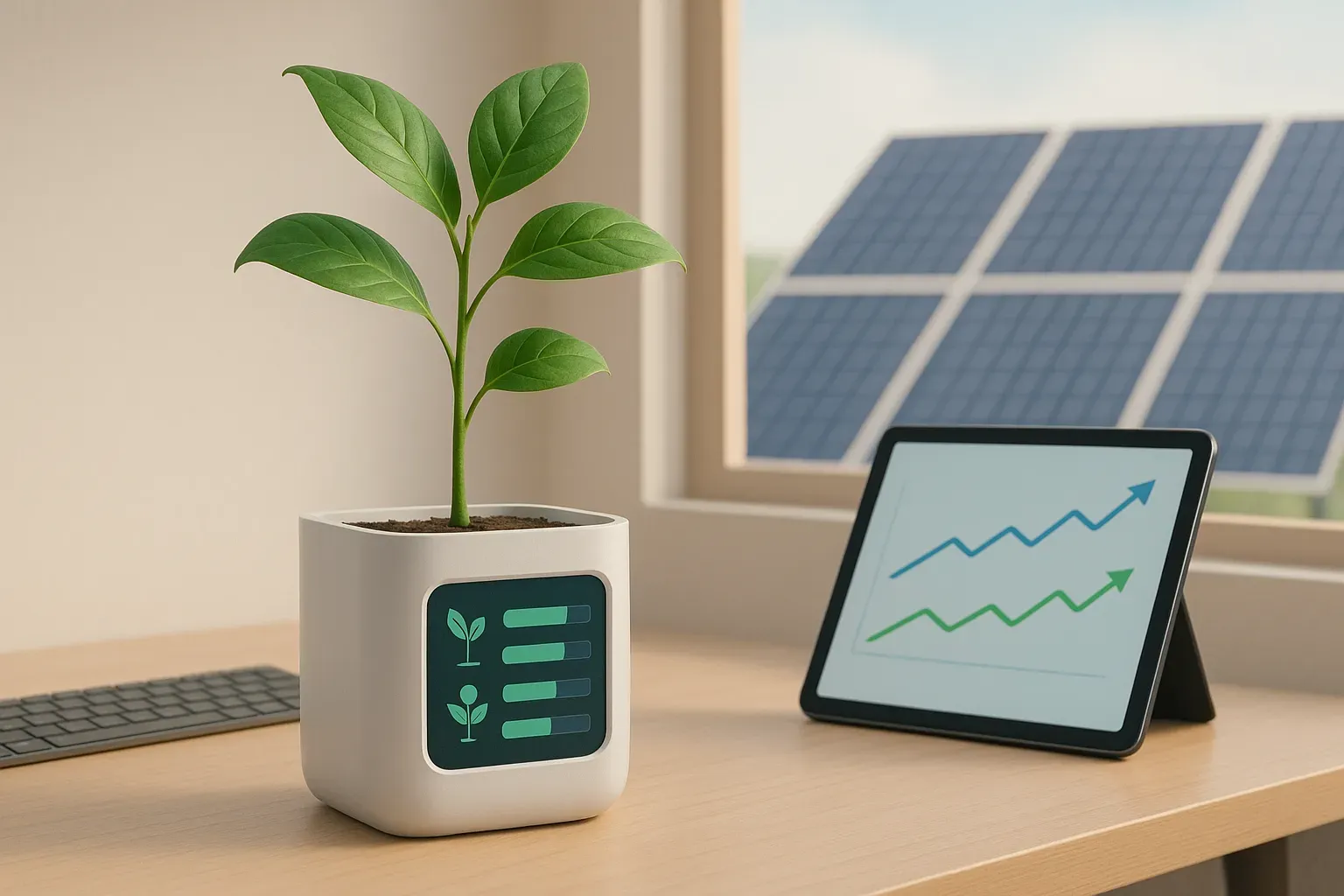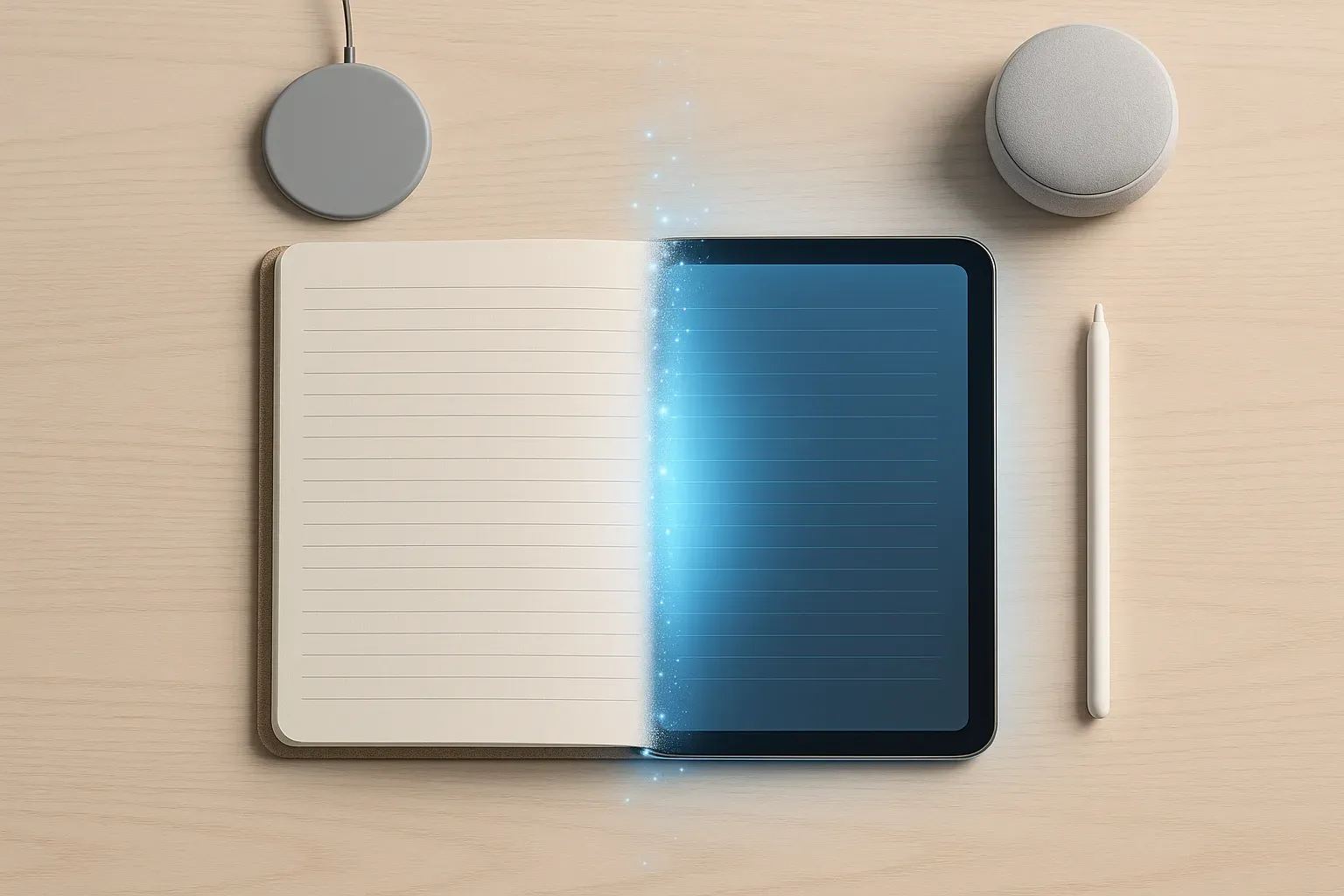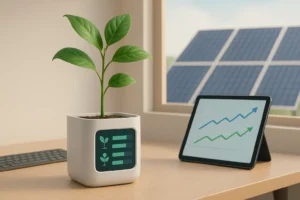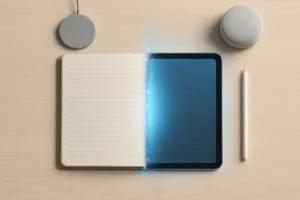Staying current with technology trends is crucial in today’s fast-paced world. This article presents practical strategies, backed by expert insights, to help you effectively track and understand the latest tech developments. From curating high-quality sources to hands-on experimentation, these tips will empower you to stay ahead in the ever-evolving tech landscape.
- Blend Curated Sources for Tech Insights
- Test New Tools Firsthand
- Schedule Weekly Tech Exploration Time
- Build Learning Into Your Routine
- Create a Personal Tech Knowledge Base
- Focus on Understanding Tech Problem-Solving
- Cultivate a Daily Tech Reading Habit
- Balance News Sources with Hands-On Experience
- Master Newsletter Curation for Focused Learning
- Treat Tech Exploration Like a Workout
- Diversify Your Information Sources
- Follow Credible Voices Before Mainstream Press
- Align Tech Sources with Your Work
- Set Aside Time for In-Depth Tech Articles
- Listen to Clients for Real-World Tech Trends
- Curate High-Quality Sources Ruthlessly
- Join Tech-Focused Online Communities
Blend Curated Sources for Tech Insights
To stay updated on the latest personal tech trends, I blend a few habits into my weekly routine. I follow a curated mix of newsletters — Benedict Evans, The Verge’s Command Line, and Stratechery — because they don’t just report news, they give context. I also keep tabs on Reddit threads like r/tech and Twitter/X accounts from product leaders and early adopters. Podcasts like Waveform and Hard Fork are great for deeper, more conversational takes, especially during commutes.
Pick one platform (like Substack, YouTube, or a specific podcast) and follow 1-2 trusted voices consistently rather than chasing every headline. The tech space moves fast, and information overload can leave you feeling more scattered than informed. I’d rather deeply understand a few key shifts — like AI integrations in consumer apps or wearable tech evolution — than skim a dozen shallow trends.
Consistency is more important than volume when it comes to staying sharp.
 Maksym Zakharko
Maksym Zakharko
Chief Marketing Officer / Marketing Consultant, maksymzakharko.com
Test New Tools Firsthand
I stay updated on the latest personal tech trends by curating a mix of trusted sources — industry newsletters, YouTube creators I trust, Reddit threads, and hands-on testing of tools through my work at Solution Suggest. I’ve found that balancing expert insights with real user experiences gives me a much clearer picture of what’s actually useful.
One tip I’d share? Don’t just read — try. Whether it’s a new AI tool, productivity app, or wearable, I make it a habit to test it out myself. That firsthand experience helps me cut through the hype and truly understand what works, what’s just marketing, and what’s worth recommending to others.
 Ram Thakur
Ram Thakur
Founder, Solution Suggest
Schedule Weekly Tech Exploration Time
As a Technical Manager, staying current with personal tech trends is essential, not just for my own growth, but to guide my team effectively. I rely on a combination of curated industry newsletters, developer community discussions, and updates from trusted sources. I also make time to explore new tools hands-on, especially in AI, dev productivity, and cloud-native development.
One tip I recommend: make continuous learning intentional. Set aside a fixed time each week to explore one new tool, framework, or concept, even if it’s outside your current stack. The tech evolves fast, but momentum comes from consistent curiosity paired with real-world testing.
 Ashish Bist
Ashish Bist
Technical Manager, Webuters Technologies
Build Learning Into Your Routine
Staying current in personal tech is less about chasing every headline and more about curating the right signal in all the noise. For me, it’s a mix of structured curiosity and purposeful scrolling. I follow a select group of tech analysts and creators on X (formerly Twitter) and YouTube whose opinions I actually trust — people who don’t just unbox gadgets, but break down what they mean for users, markets, and lifestyles. I also block out 30 minutes weekly to deep dive into trend reports, beta announcements, and product roadmaps from platforms I’m already embedded in — whether that’s wearables, AI assistants, or the latest productivity gear.
But here’s the one tip I’d offer: build learning into your routine, not around it. It’s easy to binge-read tech news when Apple drops something shiny, but real fluency comes from steady exposure. I keep a shared Notion board with my team where we drop new tools, smart takes, or emerging UX ideas. That way, learning isn’t a solo sport — it’s baked into our creative culture.
Tech doesn’t slow down. But if you treat staying informed as a habit rather than a task, you won’t just keep up — you’ll start seeing around corners.
 John Mac
John Mac
Serial Entrepreneur, UNIBATT
Create a Personal Tech Knowledge Base
As a tech geek, I stay updated on personal tech trends by using a focused and consistent routine, just like I do with system updates. I use Feedly with custom filters to track only high-signal sources including Ars Technica, Techmeme, and AnandTech.
I avoid generic news and instead set filters for niche terms, for example, “local LLMs,” “UWB,” “chiplet,” or “WebGPU.” This way, I’m not just reading what’s trending, I’m reading what’s emerging.
Additionally, Reddit also helps, but only specific subreddits such as r/selfhosted, r/homelab, and r/smartwatch. I check GitHub’s trending repositories weekly to see what developers are building, way better than waiting for polished products to hit the news.
My tip would be to treat your tech curiosity like a dev environment, modular and version-controlled. Create a Notion or Obsidian vault where you store key insights, links, and commands. You’ll build a personal knowledge base that evolves with you, way better than just scrolling and forgetting.
 Mahesh Joshi
Mahesh Joshi
Team Lead – Web Marketing, Deep Market Insights
Focus on Understanding Tech Problem-Solving
You don’t need to chase every shiny new gadget to stay current. I focus on understanding the “why” behind the trend — not just what’s trending, but what problem it’s solving. That lens helps me filter the signal from the noise. I stay informed through private Slack and Discord groups with engineers and founders. That’s where the real gems tend to show up — long before they make it to the usual tech blogs. I also review change logs and documentation from vendors I trust — it’s not exciting, but it’s where the truth lives.
One tip I have is to find two or three sources you trust and delve deep. Skimming 20 headlines won’t help you make confident decisions.
 Jason Hishmeh
Jason Hishmeh
Author | CTO | Founder | Tech Investor, Get Startup Funding, Varyence
Cultivate a Daily Tech Reading Habit
I stay up-to-date with the latest personal tech trends by following product launch updates, industry blogs, and testing new tools when I have the chance. Additionally, I have a tip: subscribe to one or two quality newsletters and read them with your morning coffee. It’s a small habit that keeps your tech edge sharp without feeling like a chore.
 Spencergarret Fernandez
Spencergarret Fernandez
SEO and Smo Specialist, Web Development, Founder & CEO, SEO Echelon
Balance News Sources with Hands-On Experience
I stay updated on personal tech trends by combining curated news sources like TechCrunch and The Verge with hands-on exploration — trying new tools and apps as they launch. One tip I always share: follow a few smart voices on LinkedIn or X (formerly Twitter) who consistently break down trends in plain language. Real-time insights from practitioners often beat polished headlines.
 Aslam Jeelani Mohammed
Aslam Jeelani Mohammed
Sr. Content Writer, Web Synergies
Master Newsletter Curation for Focused Learning
To stay up-to-date, I read developer blogs (especially those from Google I/O or WWDC), specialized Reddit communities (like r/Android for in-depth discussions), important tech news sites (like The Verge and Ars Technica), and interesting analyst reports (like those from Counterpoint on smartphone trends). This multi-faceted approach strikes a good balance between deep technical insights, real user experiences, and general news.
One useful piece of advice is to master newsletter curation. Don’t just subscribe indiscriminately; be selective. Unsubscribe from newsletters that aren’t very helpful or have become redundant. Focus on two or three that are truly valuable. The Verge’s daily “Command Line” is my top pick because it consistently highlights truly important technical developments (like the effects of Apple’s most recent changes to EU core tech) without adding extraneous information. Set aside ten minutes each day to review it. With this focused practice, you won’t get overwhelmed and will be sure to notice important changes.
For example, their brief analysis of Google’s first Pixel Fold teardowns quickly revealed durability issues, which prevented me from making an ill-advised purchase. By prioritizing quality over quantity, knowledge stays sharp.
 Prabish Khanal
Prabish Khanal
Content Manager, Touchstone Digital Solutions
Treat Tech Exploration Like a Workout
Honestly, staying ahead of personal tech trends for me is like brushing my teeth — non-negotiable and part of the daily rhythm. I’ve incorporated it into my habits. One thing I swear by is curating a carefully selected mix of newsletters and YouTube creators I trust — people who actually use the products, not just regurgitate press releases. Marques Brownlee (MKBHD) is my go-to for hardware reviews, and I couple that with smaller independent creators who delve into use cases I care about, like productivity or mobile development.
But here’s my favorite trick: set intentional time once a week to experiment. I treat new apps or tech like I’d treat a gym session. I download something, block off 30 minutes, and just experiment with it. It could be a beta AI tool, a new productivity platform, or even a smart home gadget. That “play mode” mindset has kept me sharp and far more adaptable than just reading headlines. Because learning by doing? That’s where the real value lies.
 Daniel Haiem
Daniel Haiem
CEO, App Makers LA
Diversify Your Information Sources
I follow a handful of tech-related resources, ranging from experts on LinkedIn to various blogs and different tech publications. I try to diversify my sources of tech-world information, and I make a point to read up on things daily when I get the chance. My top tip would be to diversify your sources because sometimes you’ll hear about certain developments much earlier from some sources compared to others.
 Edward Tian
Edward Tian
CEO, GPTZero
Follow Credible Voices Before Mainstream Press
I’ve realized that keeping up with personal tech news isn’t merely about consuming it; it’s about following the people who consistently deliver credible information before the mainstream tech press catches up. As someone who runs my own repair guide blog, I have a shortlist of credible voices who protect their reputation by not jumping on every reckless leak train.
For gadgets and mobile tech, I keep tabs on people like Marques Brownlee (MKBHD) whose early reviews and unbiased takes very much shape how products are viewed. In the audio world, I look to Crinacle for IEM and headphone info that is based on good measurement and not hype. And for everything that isn’t Apple news (or isn’t Apple), there’s Michael Fisher (MrMobile), and his combination of storytelling and grounded facts help me see through the trends of tech, and analyze what’s happening behind the scenes.
A recommendation if you’re in the same space: Set up custom Twitter/X and Threads lists for these people because you’re going to want to check them daily, even if just for a few minutes. Algorithms bury niche updates beneath viral fluff, but a hand-picked list allows you to quickly scan breaking insights without the noise. It has been my single most effective method for separating real leaks from fake leaks and staying one step ahead, especially when I write repair guides that have to anticipate new devices on the horizon.
 Nikolay Petrov
Nikolay Petrov
Chief Technology Officer | Founder, ZontSound
Align Tech Sources with Your Work
I stay updated on personal tech trends by following niche Instagram accounts, joining focused LinkedIn groups, and subscribing to a few high-quality newsletters. I focus on sources that go beyond headlines and offer insight into how technology is shaping behavior, influencing design decisions, and shifting user expectations. I prefer content created by people who are building and testing real products, not just reviewing gadgets.
One tip I would share is to align your sources with the kind of work you actually do. If you are in product or design, look for practitioners who share processes, experiments, and lessons from real-world execution. Staying current is not about chasing every new release. It is about identifying what matters to your space and understanding how it can be applied. That kind of filter helps you learn with purpose and stay sharp without getting overwhelmed.
 Raul Reyeszumeta
Raul Reyeszumeta
VP, Product & Design, MarketScale
Set Aside Time for In-Depth Tech Articles
I keep up with a few newsletters — I always read Creative Mornings, Dense Discovery, and Tech Productivity!
 Mackenzie Iles
Mackenzie Iles
Studio Manager & Systems Specialist, Sit Studio Inc.
Listen to Clients for Real-World Tech Trends
I’ve spent time in both IT and around recruiting teams, so keeping up with new tech is pretty much part of the job. Still, I’ll be honest — it’s easy to feel buried under all the updates flying around every week.
Here’s what actually works for me:
I bookmark one or two longer explainers each week — usually from Wired, The Verge, or TechCrunch—and carve out 15 minutes every Friday to actually read them. If I don’t set aside the time, those articles just collect dust in my bookmarks.
I’m also part of a couple of small Telegram and WhatsApp groups with friends and coworkers. People drop in links to cool tools, new apps, or some random trick they just discovered. I’ve picked up a bunch of things there I probably never would’ve found on my own.
A few newsletters land in my inbox too — Morning Brew Tech, Benedict Evans, and TLDR. They’re quick to scan, so I’m not stuck sorting through a hundred different sites just to figure out what’s new.
And podcasts — can’t forget those. I’ll listen to Waveform or The Daily Charge when I’m commuting or just running errands. It’s a simple way to stay in the loop without having to stare at another screen.
 Kira Aiello
Kira Aiello
Recruiting Technology Blogger, makethehire.com
Curate High-Quality Sources Ruthlessly
One of the best ways to stay current with personal tech trends is by listening to our clients. As an IT partner for creative teams, we’re often the first to hear when someone’s trying out a new password manager, debating an M3 Mac upgrade, or hitting pain points with remote tools.
This real-world feedback tells us where the trends are actually landing and where the gaps are.
We also stay close to a tight circle of trusted sources: consultants, niche newsletters, and our own engineering team.
My tip? Don’t try to track everything. Pick a few voices you trust, and pay attention to what your users are doing, not just what the headlines say.
 Andrew Close
Andrew Close
Founder, Counterpoint
Join Tech-Focused Online Communities
My approach is a mix of structured habits and genuine curiosity, shaped by years of figuring out what actually works without burning out.
I lean heavily on a ruthlessly curated set of newsletters like The Verge’s Command Line for broad coverage and Platformer for deep platform dives. Techmeme acts as my essential daily digest. This targeted inbox filtering is crucial — I ditch sources that feel fluffy or repetitive to save my time and attention. When I’m away from my desk, podcasts like Waveform or Decoder turn commute or chore time into learning sessions, giving me much-needed context. For visuals and hands-on feel, YouTube channels from trusted creators like MKBHD or Mrwhosetheboss are invaluable.
To peek behind the hype curtain and understand the why behind trends, I occasionally delve into summaries from analyst firms like Gartner or IDC — it’s heavier lifting, but it reveals the real adoption curves and future directions. And while big events like CES are fantastic, practical engagement for me often means lurking in focused online communities like specific subreddits (r/hardware is a favorite) or niche Discord servers. Hearing real user experiences there is gold for spotting genuine innovations or unexpected flaws. Nothing, though, replaces actually using things when possible — getting hands-on with a new OS beta or key piece of hardware reveals nuances specs alone never can.
The single tip that transformed my own knowledge upkeep? Master ruthless curation. Trying to follow every blog, Twitter account, and news site is a fast track to overwhelm and shallow understanding. What saved me was aggressively paring down to 2-3 truly essential, high-quality sources known for insight, not just speed or hype (for me, it’s Command Line and Decoder). I unfollowed the constant social media streamers and instead followed a small handful of insightful journalists, analysts, and actual engineers. Using an RSS reader (Feedly is my go-to) to pull trusted blogs into one place keeps the rest out of sight and mind. Crucially, I protect just 20-30 focused minutes each day dedicated solely to absorbing content from this curated feed — scanning headlines, listening to a key podcast segment.
 Karan Tiwari
Karan Tiwari
Content Manager, Touchstone Digital Solutions













